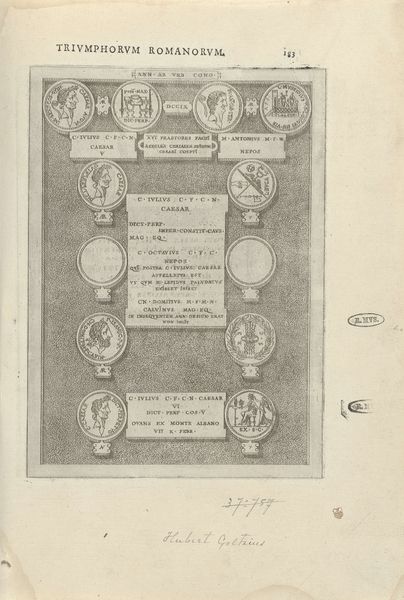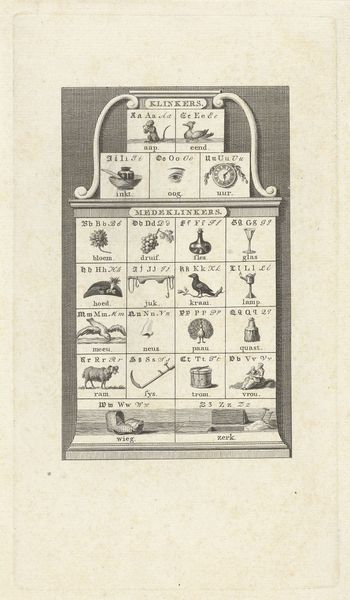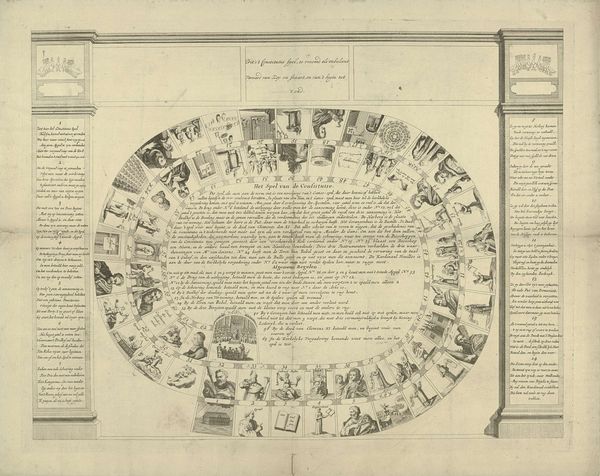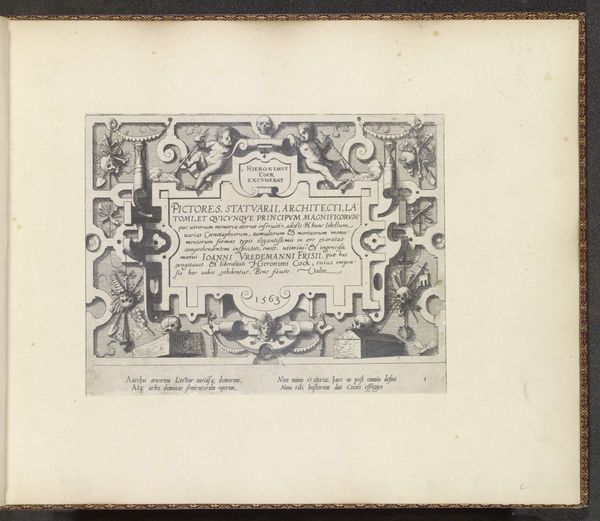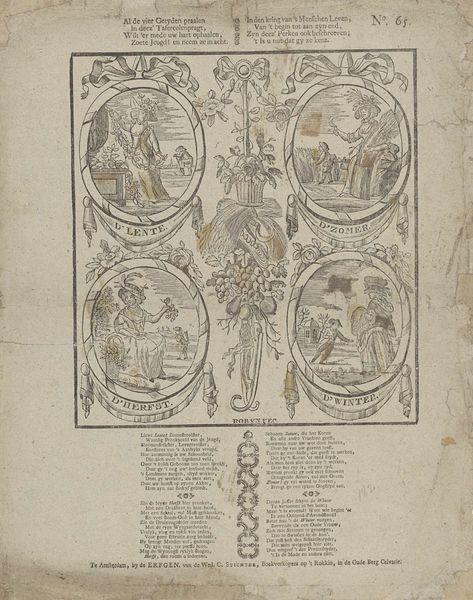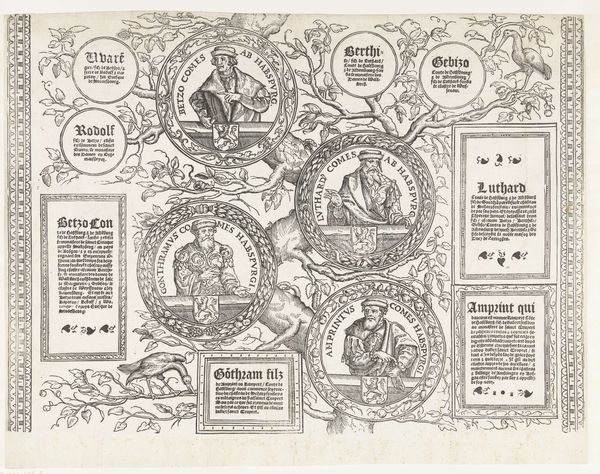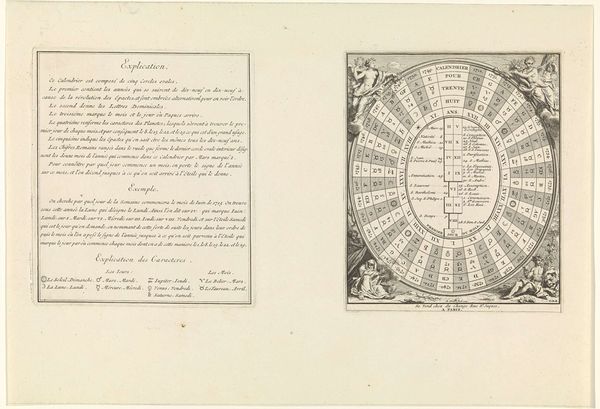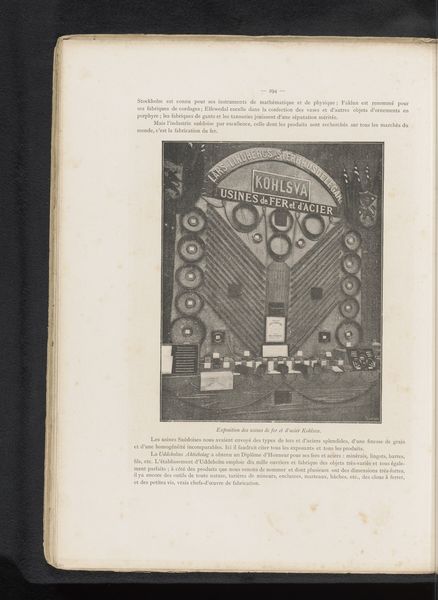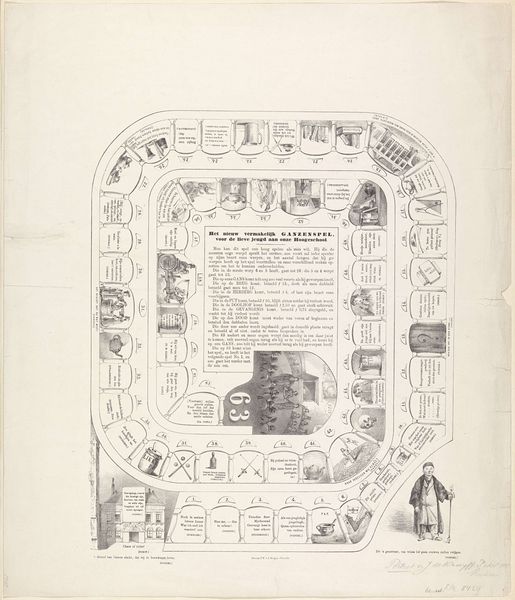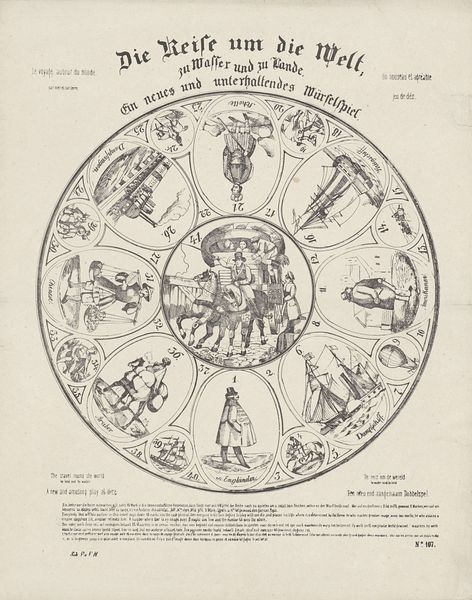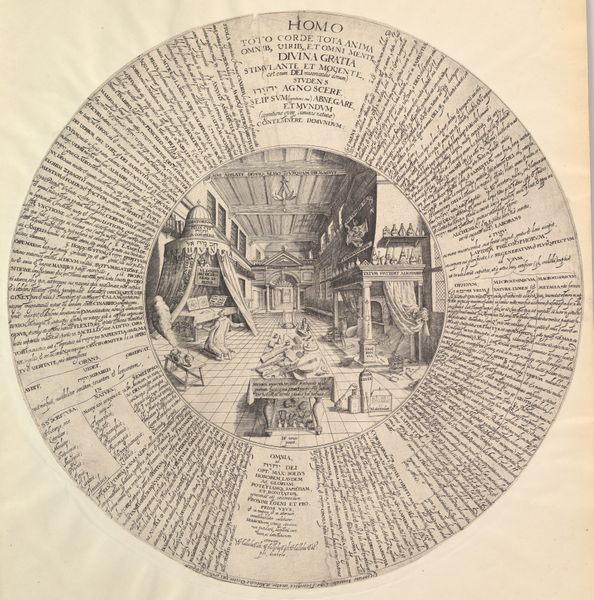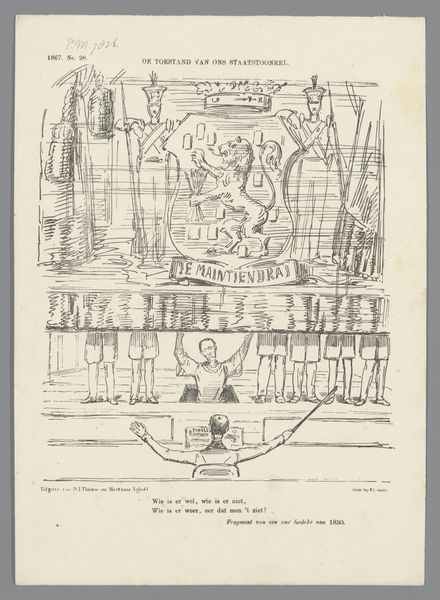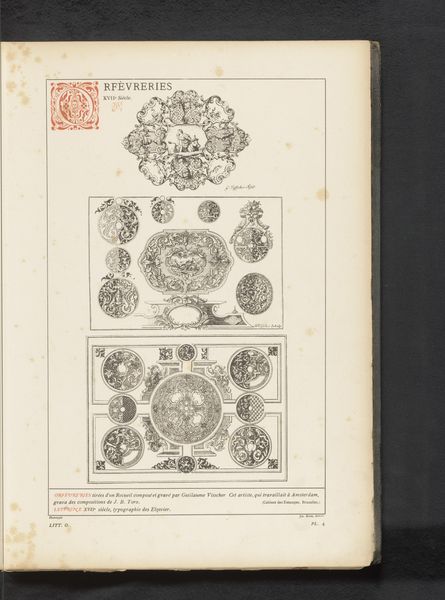
print, engraving
#
portrait
# print
#
old engraving style
#
11_renaissance
#
geometric
#
history-painting
#
coin
#
engraving
Dimensions: height 206 mm, width 150 mm
Copyright: Rijks Museum: Open Domain
Curator: Welcome. Here we have "Zeven Romeinse munten," or "Seven Roman Coins," an engraving made in 1566 by Hubert Goltzius, now held at the Rijksmuseum. The print depicts an arrangement of what appear to be seven different Roman coins or medallions within a rectangular frame. Editor: It's striking how the starkness of the engraving gives such a tactile quality to the images, as if one could reach out and feel the coolness of the metal. It feels less like an idealized depiction and more like a direct imprint of material reality. Curator: Precisely! This print, an engraving, not only preserves historical numismatic details, but invites us to analyze the politics of image making and material exchange. In Goltzius' time, knowledge of classical antiquity carried enormous cultural capital. These coins serve as potent symbols, evoking imperial power and Roman virtues. Editor: But consider the physical process. Engraving is subtractive, demanding meticulous labor to carve away material and make a printing matrix. Think about the artisanal workshops, the skilled hands that created these dies, then multiplied that work through printing. We're really tracing flows of expertise and value. Curator: I agree completely. Further, it seems that Goltzius also creates a kind of genealogy or timeline by displaying the coins connected through the network of lines and text. It emphasizes how historical narrative is itself constructed and curated, an exercise in shaping collective memory. Editor: Memory is always embodied, and this work exemplifies how artifacts and their representations operate as crucial interfaces between ideology and daily life. It makes me question our current moment, and which coins - or perhaps digital tokens - would we choose to represent it. Curator: It’s interesting how contemplating this engraving, we might discover that history and power relations reside not only in grand narratives but also within the very surfaces and inscriptions that mark our interactions with value. Editor: And also in the labor required to even produce images of these symbols, a material consideration that brings us closer to understanding art as a form of meaningful production.
Comments
No comments
Be the first to comment and join the conversation on the ultimate creative platform.
